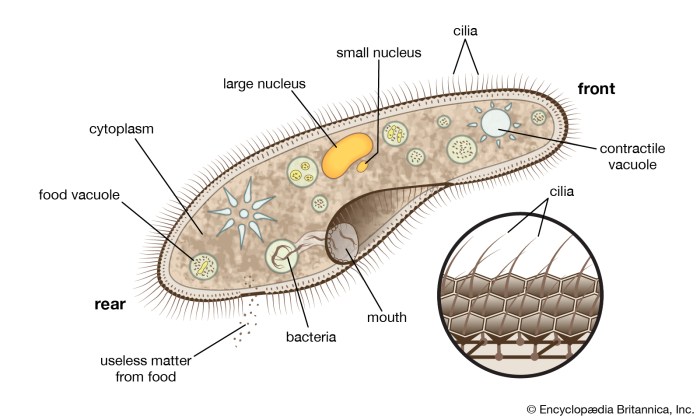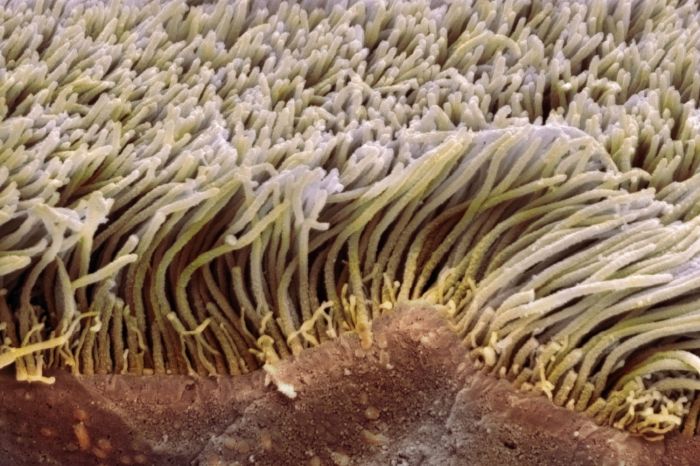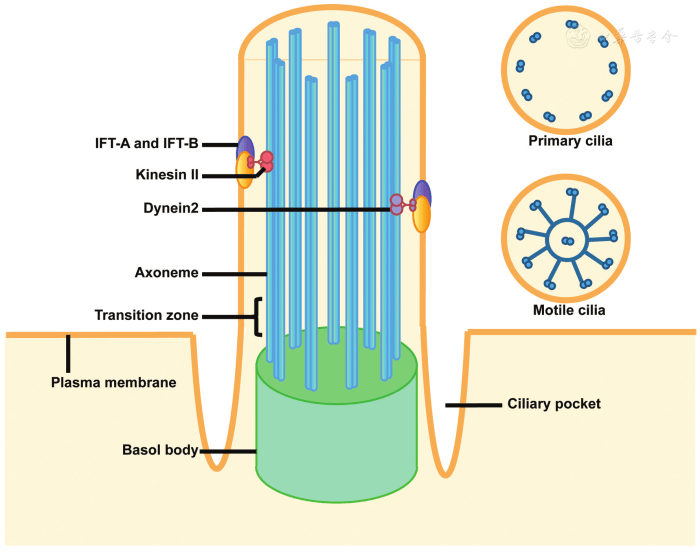Small hair-like structures used for movement or sensing things – Microscopic hair-like structures, known as cilia and flagella, play a pivotal role in the realm of life, enabling movement and sensing in organisms across the spectrum of complexity. These intricate structures, often overlooked, are the driving force behind the graceful dance of microorganisms and the delicate perception of our own bodies.
Cilia and flagella exhibit remarkable diversity in their structure and function, ranging from the simple, whip-like flagellum of bacteria to the intricate, coordinated beating of cilia lining our respiratory tracts. Their presence in organisms as diverse as protists, animals, and plants underscores their evolutionary significance and the fundamental role they play in the tapestry of life.
Small Hair-Like Structures Used for Movement

Small hair-like structures, known as cilia and flagella, are essential for the movement of many living organisms. These structures are composed of microtubules and other proteins and can exhibit whip-like or oar-like motions.
Types of Hair-Like Structures Used for Movement
- Cilia:Short, numerous structures covering the surface of cells, responsible for propelling fluids or particles.
- Flagella:Longer, whip-like structures typically found in single-celled organisms, used for propulsion and steering.
Examples of Organisms Using Hair-Like Structures for Movement, Small hair-like structures used for movement or sensing things
- Cilia:Paramecia, respiratory tract lining, reproductive tracts.
- Flagella:Bacteria, sperm cells, some protists.
Mechanisms of Movement
Hair-like structures generate movement through rhythmic bending and whipping motions. Microtubules within these structures slide past each other, powered by ATP hydrolysis, resulting in bending and propulsion.
Small Hair-Like Structures Used for Sensing Things

Hair-like structures, known as sensory hairs or bristles, are used by organisms to detect various stimuli from their environment. These structures are specialized to respond to specific stimuli, such as touch, vibration, or chemical cues.
Types of Hair-Like Structures Used for Sensing
- Tactile hairs:Sensitive to touch, found in many animals for sensing surfaces and objects.
- Vibration-sensitive hairs:Detect vibrations in the air or water, common in insects and aquatic animals.
- Chemosensory hairs:Specialized for detecting chemical substances, found in insects and some vertebrates.
Examples of Organisms Using Hair-Like Structures for Sensing
- Tactile hairs:Cats’ whiskers, human eyebrows.
- Vibration-sensitive hairs:Mosquitoes’ antennae, fish’s lateral line.
- Chemosensory hairs:Butterfly’s antennae, moths’ proboscis.
Mechanisms of Sensory Detection
Sensory hairs detect stimuli through specialized sensory receptors located at their base. These receptors transduce mechanical, vibrational, or chemical signals into electrical impulses that are transmitted to the nervous system for processing and interpretation.
Structural Diversity of Small Hair-Like Structures: Small Hair-like Structures Used For Movement Or Sensing Things

| Structure Type | Function | Organism Group | Examples |
|---|---|---|---|
| Cilia | Propulsion, fluid movement | Protists, animals, plants | Paramecia, respiratory tract lining |
| Flagella | Propulsion, steering | Bacteria, sperm cells | Escherichia coli, human sperm |
| Tactile hairs | Touch detection | Animals | Cat’s whiskers, human eyebrows |
| Vibration-sensitive hairs | Vibration detection | Insects, aquatic animals | Mosquitoes’ antennae, fish’s lateral line |
| Chemosensory hairs | Chemical detection | Insects, vertebrates | Butterfly’s antennae, moths’ proboscis |
Evolutionary Relationships
Small hair-like structures have evolved independently in different organisms, suggesting convergent evolution. However, some structural similarities and molecular components indicate a possible common ancestry.
Applications of Small Hair-Like Structures in Technology

The unique properties of small hair-like structures have inspired researchers to explore their potential applications in various technological fields.
Potential Applications
- Microfluidics:Mimicking cilia for fluid manipulation and propulsion.
- Biosensors:Using sensory hairs for detecting chemical and biological substances.
- Microactuators:Utilizing the bending and whipping motions for precise movement.
Challenges and Opportunities
Developing technologies based on hair-like structures poses challenges, such as fabrication and control, but also presents opportunities for innovation and advancement in microfluidics, biosensing, and robotics.
Essential Questionnaire
What is the difference between cilia and flagella?
Cilia are typically shorter and more numerous than flagella, and they beat in a coordinated, wave-like motion, while flagella are longer and fewer in number, and they beat in a whip-like motion.
What are some examples of organisms that use cilia and flagella?
Cilia are found in a wide range of organisms, including protists, animals, and plants, while flagella are primarily found in bacteria and protists.
How do cilia and flagella generate movement?
Cilia and flagella generate movement by bending and straightening, which creates a force that propels the organism forward or backward.

